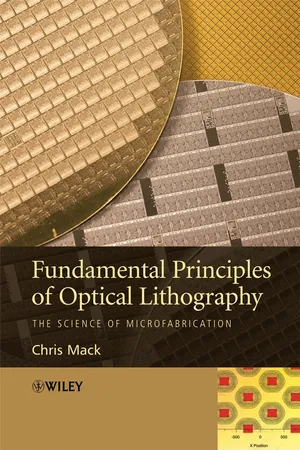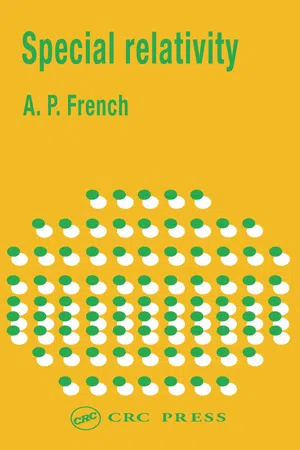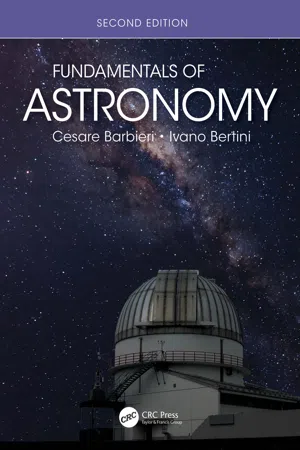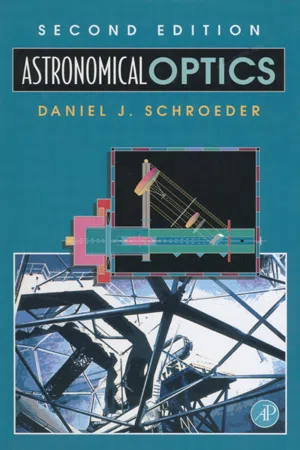Physics
Atmospheric Aberration
Atmospheric aberration is a phenomenon that occurs when light passes through the Earth's atmosphere, causing it to bend and scatter. This can result in distorted images of celestial objects, particularly when viewed through telescopes. The effect is most pronounced at low altitudes and can be corrected for by adjusting the telescope's optics.
Written by Perlego with AI-assistance
Related key terms
Related key terms
1 of 4
Related key terms
1 of 3
4 Key excerpts on "Atmospheric Aberration"
- eBook - ePub
Fundamental Principles of Optical Lithography
The Science of Microfabrication
- Chris Mack(Author)
- 2011(Publication Date)
- Wiley(Publisher)
3 Aerial Image Formation – The Details The impact of aberrations and defocus must now be added to the description of image formation provided in the previous chapter. The unique aspects of imaging while scanning the mask and wafer past the stationary imaging lens will also be included. Next, a discussion of the vector nature of light and the impact of polarization on imaging will be added and immersion lithography will be described. Finally, a preliminary discussion of image quality will conclude this chapter. 3.1 Aberrations According to Webster, an aberration is ‘… a departure from what is right, true or correct’. In optical imaging, ‘right, true or correct’ can be thought of as the ideal, ‘diffraction-limited’ imaging performance of a lens (which was rigorously defined in the previous chapter using Fourier optics). Thus, a lens aberration is any deviation of the real performance of that lens from its ideal performance. As one might imagine, aberrations are undesirable intrusions of reality into our attempts to achieve imaging perfection. 3.1.1 The Causes of Aberrations In practice, aberrations come from three sources – aberrations of design, aberrations of construction and aberrations of use. Aberrations of construction are probably the most tangible sources of errors and include incorrect shapes and thickness of the glass elements that make up the lens, inhomogeneous glass used in their construction, improper mounting, spacings or tilts of the various lens elements, or other imperfections in the manufacture of the lens (Figure 3.1). Aberrations of use include all ways in which improper use of the lens degrades its performance: using the wrong wavelength or wavelength spectrum, tilt of the mask or wafer plane, or incorrect environmental conditions (e.g. changes in the refractive index of air due to changes in temperature, humidity or barometric pressure) - eBook - ePub
- A.P. French(Author)
- 2017(Publication Date)
- CRC Press(Publisher)
c , the earth’s orbital speed being at that time quite well known.Fig. 2-3 Bradley’s data on the north-south component of the aberration of γ-Draconis (1727–1728).When we come to analyze the aberration phenomenon in terms of a theory of light, it is clear that a particle model provides a very ready explanation; it is just like the falling-rain analogy. However, one can also account for the effect in terms of waves traveling through the ether, provided the ether remains completely undisturbed by the earth’s motion. If, on the other hand, the ether near the earth were carried along with it, the aberration would not take place.1 The notion of an ether completely undisturbed by the passage of the earth must have seemed a rather strained one to many physicists, but with the wave theory standing supreme it appeared unavoidable. And then it was natural to ask: Can one make any measurements that will disclose the magnitude of the velocity of the earth through the ether? We shall next describe some experiments bearing on this question.A Modified Aberration Experiment
Suppose that a telescope has been aimed at a star whose true direction is at 90° to the plane of the earth’s orbit. Let the unknown aberration angle be α [Fig. 2-4(a) ] and let the unknown speed of the earth through the ether be v . Now imagine that the whole tube of the telescope is filled with water, of refractive index n . Since light travels more slowly in water than in air or vacuum, the time for the light to travel down the length of the telescope tube will be lengthened—by the factor n . One might expect, therefore, that to keep the star’s image in the center of the field of view one would have to tilt the telescope further, to some new aberration angle β , and that the amount of this adjustment could be used to find the speed v . At first glance one might think that the angle β would be just nv /c , but in analyzing this experiment one must remember that, because the objective lens of the telescope now has air on one side and water on the other, the light rays entering the telescope are bent toward the axis of the instrument, as indicated in Fig. 2-4(b) . Inside the telescope we would expect the rays to travel at an angle δ - eBook - ePub
- Cesare Barbieri, Ivano Bertini(Authors)
- 2020(Publication Date)
- CRC Press(Publisher)
7 Aberration of LightAs seen in the previous chapters, precession and nutation are phenomena due to the variable orientation of the observer’s system with respect to the fixed stars. The aberration, instead, is an effect due to the finite velocity of light and to the motions of the observer with respect to the celestial sources. As a consequence, the apparent direction of a celestial source, be it a distant star or a body of the Solar System, is not the same as the geometric direction at the instant of the observation. Following the traditional treatment, we shall call stellar aberration that part of the displacement that depends on the motion of the observer around the Sun, namely, the annual revolution and the diurnal rotation. Planetary aberration is the sum of the stellar aberration and the part of displacement due to the light time from the planet, comet or asteroid to the observer. The part of displacement due to the motion of the Solar System in the inertial space, a sort of secular aberration, is absorbed in the proper motions of the stars, to be discussed in Chapter 9 .Many philosophers and physicists of the past suspected the finiteness of the velocity of light, indicated as usual by c , long ago. Galileo Galilei suggested a method to measure it by means of the ephemerides of the Medicean moons of Jupiter he had discovered in Padova in January 1610. The credit for obtaining the first reliable value of c by purely astronomical means goes to Öleg Römer, at the end of the 17th century. In Paris, Römer had taken up the task of comparing the observed times of the eclipses of the Medicean moons of Jupiter with the tables compiled by Cassini. Those times could have great practical importance for the determination of the longitude of ships, as suggested by Galileo. The observations proved that Cassini’s ephemerides for the innermost moon, Io, were quite accurate at the quadratures of Jupiter with the Sun. However, the observed positions retarded or anticipated by approximately 11 (subsequently corrected in 8) min near opposition or conjunction (see Figure 7.1 - eBook - ePub
- Daniel J. Schroeder(Author)
- 1999(Publication Date)
- Academic Press(Publisher)
Chapter 10Diffraction Theory and Aberrations
The discussion of telescopes and their aberrations in previous chapters is entirely from the point of view of geometric optics. This approach is one in which the ray is a well-defined entity, with the wavelength in the geometric optics limit effectively zero. The paths of rays through an optical system are governed by Fermat’s principle and aberrations occur when rays do not pass through the paraxial image point. An aberration-free image in the geometric optics limit is, according to Fermat’s principle, a true point image. It was pointed out in Section 3.7 , however, that the wave nature of light sets the image size for an otherwise perfect or diffraction-limited optical system, with the analysis there intended only to give an estimate of the size of the diffraction image.In this chapter and the next the emphasis is on the character of the perfect image from the point of view of diffraction theory. Because no optical system is strictly perfect, we also consider the effect of the aberrations of a nearly perfect optical system on the diffraction image. Our analysis proceeds along two lines. In this chapter the starting point is Huygens’ principle and the superposition of waves from points on a wavefront. In the following chapter the analysis is in terms of transfer functions, with application to the imaging capability of the Hubble Space Telescope (HST) expected before its launch.As part of our discussion of the near-perfect image, we generalize our representation of its characteristics in terms of transverse aberrations and introduce orthogonal aberrations in terms of Zernike polynomials. With this representation we find that giving image quality in terms of root mean square (rms) wavefront error is especially informative. Our discussion includes a comparison between image size for the near-perfect image found by diffraction theory and that from geometric aberration theory as given in Chapter 5
Index pages curate the most relevant extracts from our library of academic textbooks. They’ve been created using an in-house natural language model (NLM), each adding context and meaning to key research topics.
Explore more topic indexes
Explore more topic indexes
1 of 6
Explore more topic indexes
1 of 4



